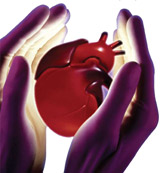Health Topics
-
Healthy Living
-
|
| |
| Endoscopic Heart Valve Surgery |
| Dr Sathyaki Nambala |
 |
Did you say you only knew about one type of heart valve surgery – the one with the painful cut across the middle of the chest and a month to recover from that? |
|
All that is about to change. With recent technological advancements, heart surgeons are now performing heart valve repairs and replacements through tiny incisions on the chest wall. It just does not stop there, blood loss is so minimal that your dentist could end up losing more, and don’t be shocked if your surgeon says you could leave the hospital the very next day.
What was most frightful to patients undergoing conventional heart surgery was the long painful incision along the middle of the chest with the breast bone or sternum having to be split all along. In addition, the recovery was often prolonged, with a hospital stay that could be as long as ten days and a few weeks to a month of recovery at home.
It meant more than a month away from work, no pay and the pain to endure. In short, it could simply disrupt life. Endoscopic or Key hole heart valve surgery changes the equation in several ways. Although mostly applicable to patients with valve diseases, it does not involve cutting of any bone and the entire operation is performed through a 1 inch incision on the side of chest that’s completely hidden. Your neighborhood physician may not believe you when you tell him you have had heart surgery.
How is it performed?
The port access surgery technique allows surgeons to use one to four small (5- 10 mm) incisions or “ports†in the chest wall between the ribs. An endoscope or thoracoscope (thin video instrument that has a small camera at the tip) and surgical instruments are placed through the incisions.
The scope transmits a picture of the internal organs on a video monitor so the surgeon can get a closer view of the surgical area while performing the procedure.
In keyhole mitral valve surgery, the sternum remains intact. A Small incision is made on the side of the chest and the entire operation is performed through ports or “keyholes†using highly specialized equipment. A robot may also be used. This 39 year old lady shown above could leave the hospital the very next day after surgery. The benefits are several. In addition to the cosmetic benefits, significantly reduced blood loss avoids the perils of blood transfusion. Since very little of the heart and chest cavity is exposed, infection is less likely. Tissue trauma is so minimal that healing is quicker and hospital stay cut short. In most cases, 24 – 48 hours is all that is required. One can be fully functional and active immediately after discharge. These advantages do not apply to the patient alone. A shorter hospital stay means reduced health care costs in the long run, and more beds available for care. Although initial investments are high, the cost of surgery per individual more or less remains the same.
Minimally invasive aortic valve surgery involves a slightly different technique. The upper part of the sternum is split. But healing and hospital stay remains the same as in endoscopic surgery.
Two thirds of the sternal body remains intact and a small part of the heart is visualized. In addition to a skilled surgeon a good anesthesiologist with excellent echocardiographic skills is a must.
Recovery time is fast with patients extubated early, mobilized on the same day and discharged as early as the 2nd postoperative.
Aortocoronary Bypass or what is traditionally referred to as CABG can also be performed by a minimally invasive technique. Not every patient however is suitable. Candidates with one or two vessel disease involving the vessels on the surface of the heart are usually suitable. The surgeons comfort in the approach, his experience in minimally invasive surgery, play a significant role in the safety of this technique.
Endoscopic conduit harvesting or removal of the vessel to be used in bypass surgery has now become standard in several centers. The long leg incision and the associated problems with healing after a conventional vein harvest can be completely eliminated.
What heart diseases are suitable for the minimally invasive technique?
- Aortic Valve Replacement or Repair
- Some types of Aortic Aneurysms
- Mitral Valve Repair or Replacement
- Combined mitral and tricuspid valve surgery
- Atrial Septal Defect (ASD) repair
- Patent Foramen Ovale (PFO) repair.
- CABG or Bypass Surgery
- Reoperations
- Lead placement on the surface of the left ventricle while implanting a pacemaker
- Ablation of certain arrhythmias
Am I a candidate for minimally invasive heart surgery?
Your cardiac surgeon will review the results of your diagnostic tests before your scheduled surgery to determine if you are a candidate. You should convey your desire to undergo this kind of surgery if applicable. The surgical team will carefully weigh the advantages and disadvantages
of minimally invasive heart surgery against traditional surgery and their decision will be communicated to you.
Recovery after minimally invasive heart surgery
Patients who have had minimally invasive surgery may be able to go home as early as 48 hours after surgery. Your health care team will help you recover as quickly as possible.
Your doctor will provide specific instructions for your recovery and return to work, including guidelines for activity, driving, incision care and diet.
In general, you may be able to return to work (if you have a sedentary job), resume driving and participate in most non-strenuous activities within 2 weeks after minimally invasive heart surgery. You can resume heavy lifting and other more strenuous activities within 6 to 8 weeks after minimally invasive surgery. |
| |
 |
Dr Sathyaki Nambala is Consultant Cardiothoracic Surgeon, Apollo Hospitals, Bangalore. |
|
|